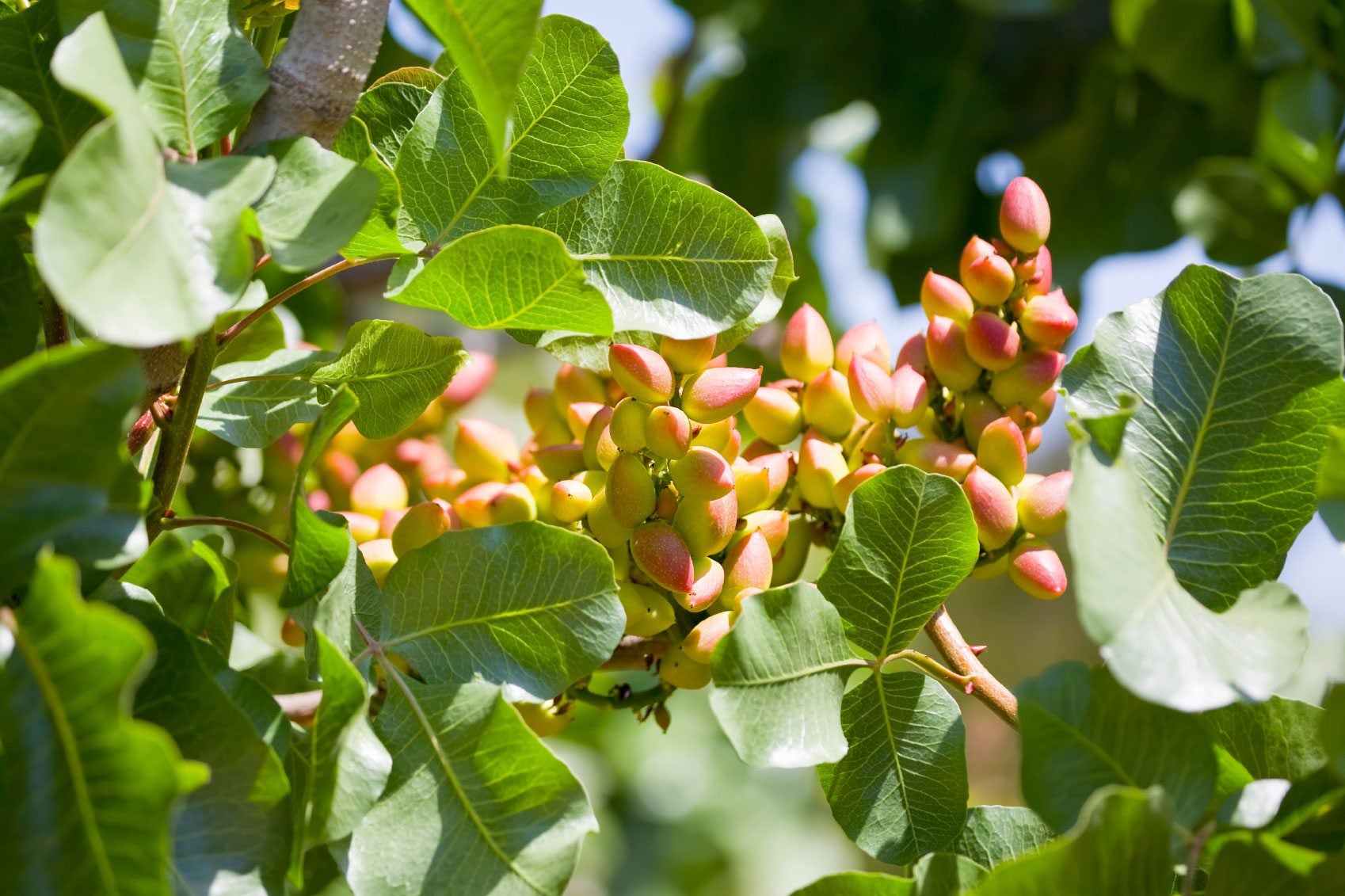
Pistachio nuts are getting a lot of press these days. Not only are they the lowest calorie of the nuts, but they are rich in phytosterols, antioxidants, unsaturated fat (the good stuff), carotenoids, vitamins and minerals, fiber, and are just plain delicious. If that isn't enough information to entice one to grow pistachio nut trees, I don't know what will. There are 11 species of pistachio nut trees with only Pistacia vera being grown commercially. It's uncertain where pistachio nut trees originated, but possibly in central Asia. Growing pistachio trees commercially for nut export occurs primarily in Turkey, Iran, Afghanistan, Italy, and Syria where the arid climate is optimal for growth.
How to Grow a Pistachio Tree
Climate is crucial when growing pistachio trees; ideal temperatures for pistachios are above 100 degrees F. (38 C.) during the day. Pistachios also need winter months cold enough to complete their dormant period-- 45 degrees F. (7 C.) or below. In addition, pistachio nut trees don't do well at high elevations due to the cool temps, or anywhere where it dips below 15 degrees F. (-9 C.). So, it's a little picky about its temperature requirements. Conversely, pistachio trees do well in all soil types but really thrive in deep, sandy loam. Well-draining soil is a must and infrequent deep irrigation if possible. Additionally, they are quite drought tolerant but don't do well in areas of high humidity.
Additional Pistachio Tree Care
Although pistachio trees are long living, with a large tap root, and can grow 20 to 30 feet (6-9 m.), seedlings can be grown in containers for the first three to five years and then transplanted into the garden. In the garden or orchard, trees should be planted 20 feet (6 m.) apart. Pistachio nut trees are dioecious, therefore, to get a good crop set, both male and female trees are needed. Pollination is through wind dispersal of pollen, which usually takes place in early to mid-April. Stormy springs may affect the crop set by interfering with pollination.
Pruning Pistachio Trees
Since these trees are classified as fruit trees, pruning pistachio trees is integral to producing higher quality fruit while controlling growth. For young trees, select the three to five branches you wish to use as scaffold branches or the primary structure of your pistachio in April of the first growing season. Choose those that are equally spaced around the trunk but not across from each other with the lowest branch 24 to 32 inches (61-81 cm.) above the soil and cut all other branches below this. Remove any upper branches that will shade the tree trunk and pinch those that are not scaffolded to 4 to 6 inches (10-15 cm.) from the trunk. Then in June, prune the scaffold branches 2 to 3 feet (61-91 cm.) in length to promote side branching, while leaving the lateral shoots to aid in shading the trunk as it grows. Maintain the open center structure as the tree grows taller by choosing secondary scaffold branches. You may prune two to three times a year, with summer pruning occurring in the spring and summer and dormant pruning in the fall.
Sign up for the Gardening Know How newsletter today and receive a free copy of our e-book "How to Grow Delicious Tomatoes".

Amy Grant has been gardening for 30 years and writing for 15. A professional chef and caterer, Amy's area of expertise is culinary gardening.
